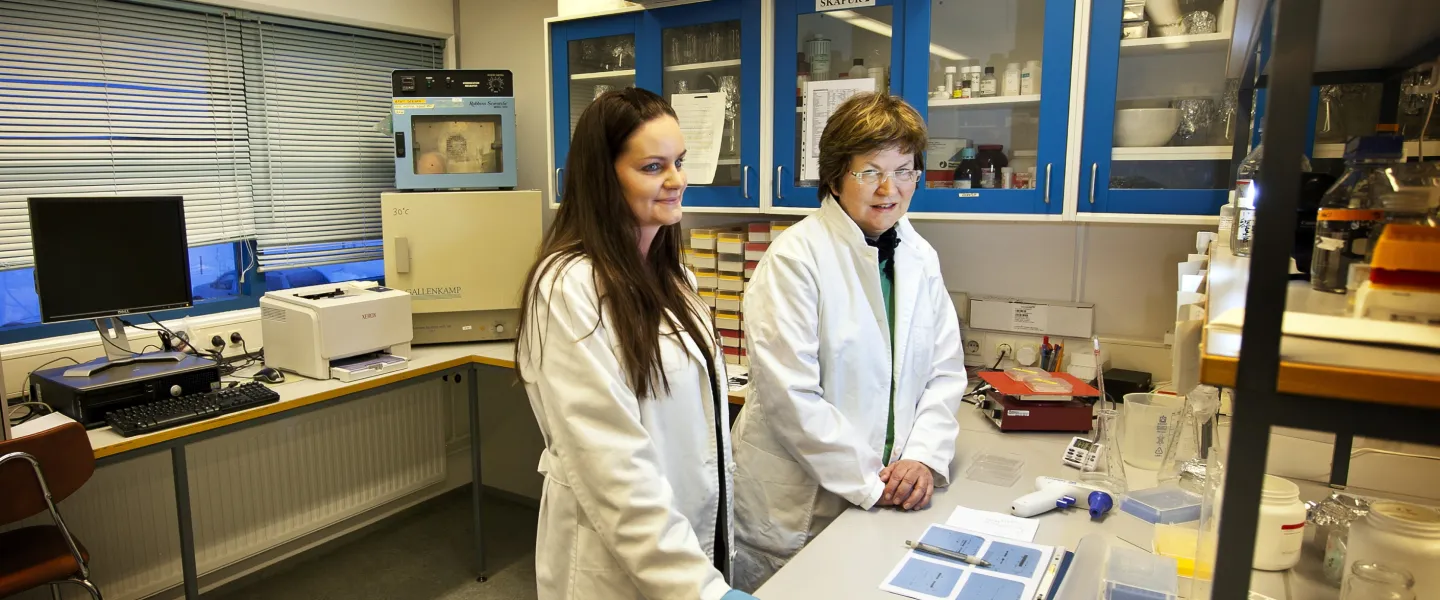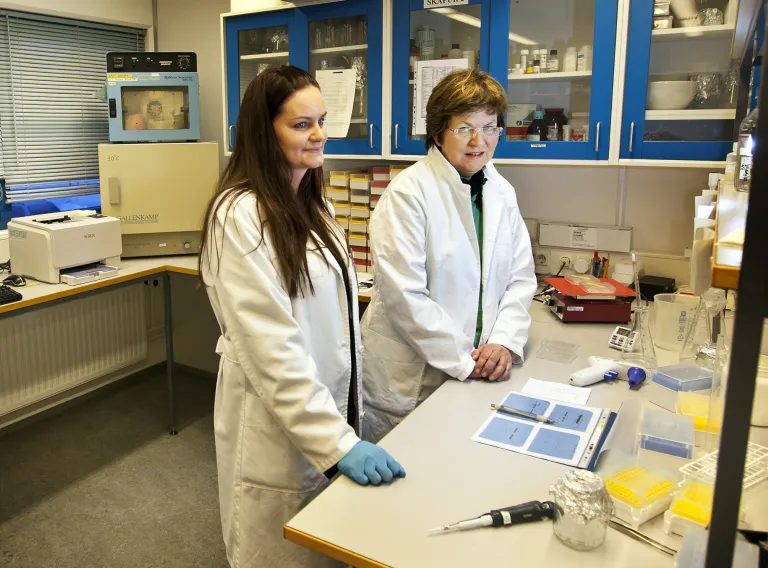
Ásbjörg Ósk Snorradóttir is a very enthusiastic young scientist who makes the effort to work on a demanding doctoral programme, in spite of having two young children. Before Snorradóttir started on her doctorate at the University of Iceland she studied medical laboratory technology at the Technical University.
“Snorradóttir came to us to work on a student Innovation Grant and we immediately recognized her zeal and applied for a Doctoral grant for her, thus enabling her to change her small project into a doctoral programme,” says Ástríður Pálsdóttir, Molecular Biologist at Keldur, but she is Snorradóttir’s supervisor along with Birkir Þór Bragason Biologist at Keldur.
“Snorradóttir is reaching very interesting conclusions and she will complete her studies this year.” The study they are working on together has the goal of discovering why a mutated protein, known as cystatin C, causes a hereditary dominant disease causing repeated strokes. The strokes eventually lead to death in the young people who carry this mutation.
Pálsdóttir says that the protein causes the formation of so-called amyloid in the brain arteries in carriers; amyloid is an unnatural and undesirable precipitation of proteins in body tissue. “Despite hereditary stroke being a very rare disease there is a strong relationship here with other amyloid diseases like Alzheimer and other diseases in connective tissue,” says Pálsdóttir. Their research may therefore have implications in the treatment of more diseases than hereditary stroke.



